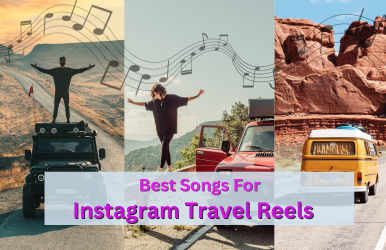Travel Hookups: The Dangers Of Hooking Up When You Travel
BY Barsha Oct 22, 2025
I know what’s going on inside that pretty head of yours. You are probably thinking how many hookups I've had during my travels - especially since I am here to talk about travel hookups! TBH, a few times for sure - not too many times, but definitely a few times. I mean, I had no idea about how the hookup culture worked during vacations - until I tried it out a few times. And now? Well, while the adrenaline is certainly thrilling, it does come with some major risks. And while I’m nobody to stop you, it’s important that I help you out with my comprehensive list of dangers associated with travel hookups. Once you are aware, you will be safe while having ‘fun’ on vacation. Stay tuned. What Are The Dangers Of Hooking Up When You Travel? Romantic relationships on the road can be a great way to experience a foreign culture intimately, but at the same time, navigating the dating scene abroad can be a minefield. Hooking up while traveling is an experience many actively strive for; as of 2025, 58 percent of travelers have embarked on a vacation romance, according to a recent TripAdvisor survey. Hookup culture not only accepts but actively encourages casual sex, including activities like one-night stands, without necessarily including bonding or emotional intimacy. The term “hookup” has a broad scope because it can indicate any form of sexual activity between partners, including kissing. One can expect the dangers of hookup culture to be amplified when the partners in question have gone all the way at least once, especially regarding the following point. In this context, let’s look at the primary dangers of travel hookups: Misaligned expectations The risks of overindulging in alcohol The dangers of hooking up are relative About good old-fashioned regret The big issue of safety. 1. Misaligned Expectations: The question of whether it’s acceptable or even desirable to hook up with someone while traveling is very complicated. It first depends on the object of the hookup: a local or a fellow traveler? It seems far less complex when the person is also traveling and in a similar situation to you. Given the significant financial gap and ensuing power imbalance between tourists and locals in destinations like third-world countries, there’s no shortage of potential problems. The traveler might see it as a fling, and the local – as real love, finally. Streams of messages over different online apps will follow the interaction, which can get awkward and, ultimately, one person could decide to block the other and move on. 2. The Risks Of Overindulging In Alcohol: It’s a fine line between lowering inhibitions and becoming too intoxicated to make smart decisions about what you do or don’t want to engage in. Overindulging in alcohol makes you more vulnerable to assault and theft, not to mention risking alcohol poisoning and ruining your entire vacation. 3. Relative Dangers Of Hooking Up: That only begins to scratch the surface of the dangers faced by women. Trust your intuition if a situation feels wrong or unsafe. Don’t assume you’re safer leaving a bar in a foreign country with someone you just met than you would be back home. The sometimes misleading sense of security you feel while on vacation can make you vulnerable. Other vacationers won’t necessarily have your best interests at heart. Safe sex is about more than wearing a condom; it’s about not ending up on the news as a cautionary tale. 4. About Good Old-Fashioned Regret: An online survey of 1,468 college students found that more than 27% felt embarrassed about a recent hookup, just under a quarter reported emotional difficulties, a fifth felt a loss of respect, and a tenth shared they had problems with their long-term partner. 78% of women and 72% of men who had casual sex reported experiencing regret thereafter, according to a Canadian survey of 200 undergraduate students. 5. The BIG Issue Of Safety: Obviously, this is perhaps the most important issue associated with travel hookups. When you reside somewhere unfamiliar, you become more open and vulnerable to any kind of sexual assault. Both drug use and alcohol are common parts of travel, and both can sufficiently increase risks when you are traveling. Why? Well, it can impair your judgement, increasing risks in the process. As per travel data on Satista, sexual violence in international trips is typically perpetrated by strangers or even recent acquaintances. Of course, this is correct, considering you won’t have your usual security network of family and friends who can interfere or even help in case of something dangerous. Moreover, in a foreign land, you might not be familiar with social cues or even local emergency support. How To Minimize Risks Associated With Travel Hookups? Now that I’ve highlighted the major risks associated with travel hookups, I have a few tricks up my sleeve to minimize the dangers associated with travel hookups: Always meet in Public! If you are meeting someone from a dating or hookup app for the first time, and that too while you are traveling, then it's best to meet them in a public spot. And best to avoid drinking - what if they spike your drink? But if you still want to be a little tipsy, drink a little, depending on your tolerance, and then go meet someone new. Always confide in someone about your plans. So what are they miles away from you? My best friend lives on another continent, but I always message her - she knows what to do if she doesn’t hear from me every few hours. Also, I always share my live location with her - just to be extra safe. While you can do a thousand other things, it is best to trust your gut. If something feels off, then trust your instincts and leave. You don’t need to hook up with someone who doesn’t make you feel comfortable at the onset. And if you are meeting in public, then leaving is always an easy option. Lastly, never disclose personal information. This basically means don’t tell your tour ‘date’ which hotel you are residing in, what your plans are for the next few days, and stuff like that. This is because once you do leave, considering something feels off, they might just follow you and make it unsafe for you. The Dos Of Hooking Up When Traveling: It’s not about avoiding hookups while traveling, but approaching them the right way. To make sure you don’t regret the experience, don’t lower your standards. Always be selective and don’t hook up with people in your tour group or who are staying at your hotel – it will prevent the awkwardness of running into them after a disappointing experience. Follow the golden rule: come and leave with friends and look out for each other and, ideally, other travelers. Being an active bystander will make sure no one looks back on situations abroad with regret.






















